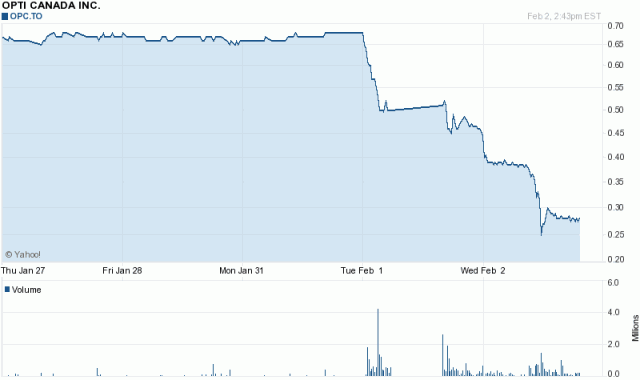A post by Michael James (via Larry MacDonald) on the emotional benefits of dividend investing I thought was very well written.
Dividend issuance is not a valuation metric – although there is high correlation between companies that give out dividends and companies with good cash generation abilities, the issuance of dividends themselves does not cause the investment to be a good value. A company that previously did not declare dividends does not become more valuable the day after they announce dividends (although the market typically treats such announcements favourably in anticipation that dividend funds will increase demand on the stock).
When you isolate all other variables, there is no difference in investing in shares of a company worth $100/share that produces $10/year in earnings and selling $10 worth of shares each year versus that company issuing a $10 dividend each year.
Most dividend-bearing companies are stable simply because they have reached that point in the company’s maturity where they can give off cash without it being adverse to operations.
There are real-life subtle differences between dividends and capital gains which must be considered.
One is that there is a taxation difference between dividends and capital gains that must be considered in an investor’s risk profile – in Canada, lower income individuals would have a preference for dividends, while higher income individuals generally are indifferent. For example, using 2011’s BC tax brackets, a low income bracket individual will have a -9.4% marginal rate on eligible dividend income and a 10% marginal rate on capital gains. A high tax bracket individual will pay 23.9% on dividends and 21.9% on capital gains.
The other salient tax point is that you can choose to defer capital gains by not selling, while dividends have to be taken when declared by a company’s board of directors.
Another consideration is that cash in the hands of management is not equivalent to cash in the hands of an individual. If you believe management is more capable of investing cash, you would want them to retain as much of that capital for reinvestment as possible. If management gives out dividends, they are implicitly stating they are not capable of producing a market-beating return on that capital beyond what they have already invested.
You see this taking effect in companies when they declare large special dividends – the stock price usually increases by some amount because the market is implicitly stating that cash in the hands of management is worth less than the shareholders.
You can also use this to determine the competence of management – if management continues giving out more cash than the company can generate, it is a negative sign.
Ultimately what matters is the total market value of your portfolio increases over time, whether those returns are produced by capital appreciation or by income generation. Sometimes the market has more demand for income and sometimes the market has more demand for capital appreciation – these gyrations in sentiment are what cause opportunities for the neglected part of the marketplace, just as how most non-dividend bearing companies in the marketplace today are somewhat discounted by the apparent lack of income produced.
There is a certain beauty in the premise of dividend investing, but ultimately it is a failed strategy if an investor does not consider the underlying operations of the company and evaluating the company’s ability to generate free cash flow that sustain such dividends. Whether a company gives off dividends in the process or not is a very minor consideration in the valuation process.
